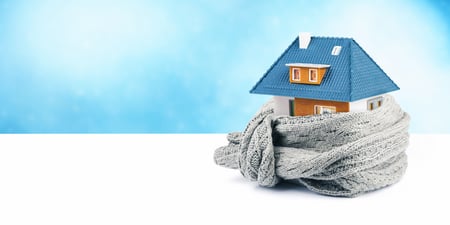6 Items to Insulate in Your Home Before Winter

 Taken individually, they may appear harmless. However collectively, the air leaks in your home could be compromising your indoor air comfort and increasing your monthly energy bills by as much as 25 percent. Many of these leaks occur around a home's “envelope,” or the roof, attic, subfloor, exterior doors, windows and exterior walls. “If you added up all the leaks, holes and gaps in a typical home's envelope, it would be the equivalent of having a window open every day of the year,” the U.S. Department of Energy says.
Taken individually, they may appear harmless. However collectively, the air leaks in your home could be compromising your indoor air comfort and increasing your monthly energy bills by as much as 25 percent. Many of these leaks occur around a home's “envelope,” or the roof, attic, subfloor, exterior doors, windows and exterior walls. “If you added up all the leaks, holes and gaps in a typical home's envelope, it would be the equivalent of having a window open every day of the year,” the U.S. Department of Energy says.
Sealing your home properly could be a major undertaking. If you want to limit the list to the top seven “leakage points” you can handle yourself, focus your efforts on the following:
1. Doors and windows
Yes, they are two separate entities, but since these “cut-outs” are where homes lose the most energy, the Department of Energy considers them one unit. Run a feather or long-stemmed lighter around the perimeter on a breezy day to identify gaps, cracks and holes. Then use weather-stripping around movable components and caulk around stationary components.
2. Attic
Attic insulation can keep your home warmer in the winter and cooler in the summer. If you can see the floor joists in your attic, you probably need more insulation. Follow this guide for the insulation type you prefer.
3. Crawlspace
Ensuring your crawlspace is properly insulated should result in some immediate benefits: better temperature control, improved indoor air quality and moderated energy costs. It's not uncommon to find water leaks or moisture in a crawlspace and repairing them before insulating will compound the benefits.
4. Ducts
Ducts are a natural place to inspect for leaks since they carry conditioned warm and cool air to various rooms throughout your home. Look for disconnects or gaps and plug them with mastic tape before wrapping them in insulation batts.
5. Exposed pipes
It will probably take you a while to inspect all the pipes in your home. But the exercise is worth the time. You might find a leak, or evidence of a leak in the form of a water stain. Repair the leak – or call someone who can – before wrapping the pipes. Freezing water may not be a big risk in Las Vegas, but insulation will help ensure water continues to flow freely.
6. Air leakage points
When you think of all the places a hole leads to the outdoors, you might be surprised that you don't feel gusts of air when you walk by them all. If you don't, that's a good sign. But take the time to inspect leakage points around TV and phone lines, recessed lighting, vents and especially those tiny but mighty leakage points: outlets and switch plate covers.
Contact Polar Shades
Once all the air leaks in your home are fixed you can begin the process of sun control. Turn to Polar Shades for a free in-home window shade consultation and learn how our interior shades can help beautify your home while keeping the sun out. Call 702-260-6110 to get started today.

